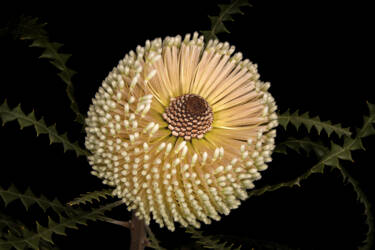Aurora photography: A guide to the night sky
Make the most of your aurora adventure with these tried and tested camera settings and editing tips
The aurora borealis, or northern lights, is one of nature’s most breathtaking phenomena. Seeing and capturing this celestial light display can be a thrilling experience for photographers of all levels. Here’s how to get started.
What is the aurora borealis and when is the best time to see it?
The aurora borealis occurs when charged particles from the sun interact with the Earth’s magnetic field and atmosphere. These particles collide with gases such as oxygen and nitrogen, causing them to emit light in various colours, most commonly green, but also red, pink and purple. This natural light show is most visible in polar regions due to the concentration of the Earth’s magnetic field here.
For those in Europe, the best time to view the aurora borealis is during the winter months, from late September to early April. The long, dark nights of winter provide optimal conditions for seeing the lights, particularly in northern countries such as Norway, Sweden, Finland and Iceland. The aurora is most active around the equinoxes in March and September, due to the alignment of the Earth’s magnetic field with solar winds.
Z9 + NIKKOR Z 14-24mm f/2.8 S, 14mm, 15 sec, f/2.8, ISO 500 ©Scott Antcliffe
Nikon’s low-light technology advantages
Photographing the aurora borealis requires a camera that excels in low-light conditions, and Nikon offers several models that are ideal for this purpose. The Nikon Z9 and Z8, with their advanced low-light capabilities and high ISO performance, are perfect for capturing the vibrant colours and subtle details of the aurora. Paired with Z mount lenses, which offer superior light-gathering abilities, my Z9 ensures sharp and vivid images. Using fast lenses with wide apertures (such as f/1.8 or f/2.8) allows more light to hit the sensor, reducing noise and enhancing image quality in low-light situations.
Z9 + NIKKOR Z 14-24mm f/2.8 S, 14mm, 15 sec, f/2.8, ISO 500 ©Scott Antcliffe
Step-by-step guide to camera setup and settings
- Choose the right lens: For aurora photography, a wide-angle lens is essential to capture as much of the sky as possible. The NIKKOR Z 14-24mm f/2.8 S or the NIKKOR Z 20mm f/1.8 S are excellent choices. Their wide apertures and fields of view allow you to encompass the entire spectacle of the aurora.
- Set up your camera on a tripod: Stability is key in low-light photography. A sturdy tripod (I prefer the Gitzo) will prevent camera shake and ensure sharp images, especially during long exposures.
- Shutter speed: Start with a shutter speed of around 10-20 seconds. Longer exposures allow more light to reach the sensor, capturing the aurora’s movement and colours. However, too long an exposure can cause stars to blur due to the Earth’s rotation, so experiment with different times. Anything from 10-25 seconds should yield some pleasing results.
- Aperture: Use a wide aperture such as f/1.8 to f/2.8. This maximises the light intake, essential for capturing bright and colourful auroras.
- ISO settings: Start with an ISO setting of around 800 to 1600. Higher ISOs will increase the sensor’s sensitivity to light but also introduce noise. Nikon cameras perform exceptionally well in low-light conditions, allowing for higher ISO settings without significant noise.
- White Balance: Set your White Balance to ‘Daylight’ or ‘Auto’. This helps maintain the natural colours of the aurora. You can also experiment with different White Balance settings in the menu to achieve different tones in your photos.
- Focus mode: For exact precision, use Manual focus to set your focus and fine tune it by focusing on a distant bright star or light source.
- Set up SnapBridge. Either set up a remote shutter control or download Nikon’s SnapBridge app so you can set up your camera, stand back and snap from your phone.
Z9 + NIKKOR Z 14-24mm f/2.8 S, 19mm, 25 sec, f/2.8, ISO 500 ©Scott Antcliffe
Tips for editing aurora images
Editing is a crucial step in bringing out the best in your aurora photos. Here are some tips:
- Adjust exposure and contrast: Slightly increase the exposure if your image appears too dark. Boosting contrast can help define the aurora’s shapes and colours against the night sky.
- Enhance colours: Use the saturation and vibrance tools sparingly to bring out the aurora’s natural colours without making them look unnatural. Green is the most common colour, but subtle tweaks can reveal reds and purples that might not be immediately visible.
- Reduce noise and sharpen: Even with the best camera settings, some noise is inevitable. Use noise reduction tools in your editing software to clean up the image while preserving details. Minor sharpening can bring out more detail.

Z9 + NIKKOR Z 14-24mm f/2.8 S, 14mm, 15 sec, f/2.8, ISO 200 ©Scott Antcliffe
Capturing the aurora can be a rewarding experience and, by understanding your camera’s capabilities, setting it up correctly and applying thoughtful edits, you can create stunning images that truly capture its magic. So, bundle up, head out into the cold and get ready to photograph one of the most beautiful sights on Earth.
More in Travel and Landscape
More by Scott Antcliffe
How to make the most of this summer’s golden hour with backlighting
What is crop factor and how do I calculate it? DX and FX explained

Unlock greater creativity








